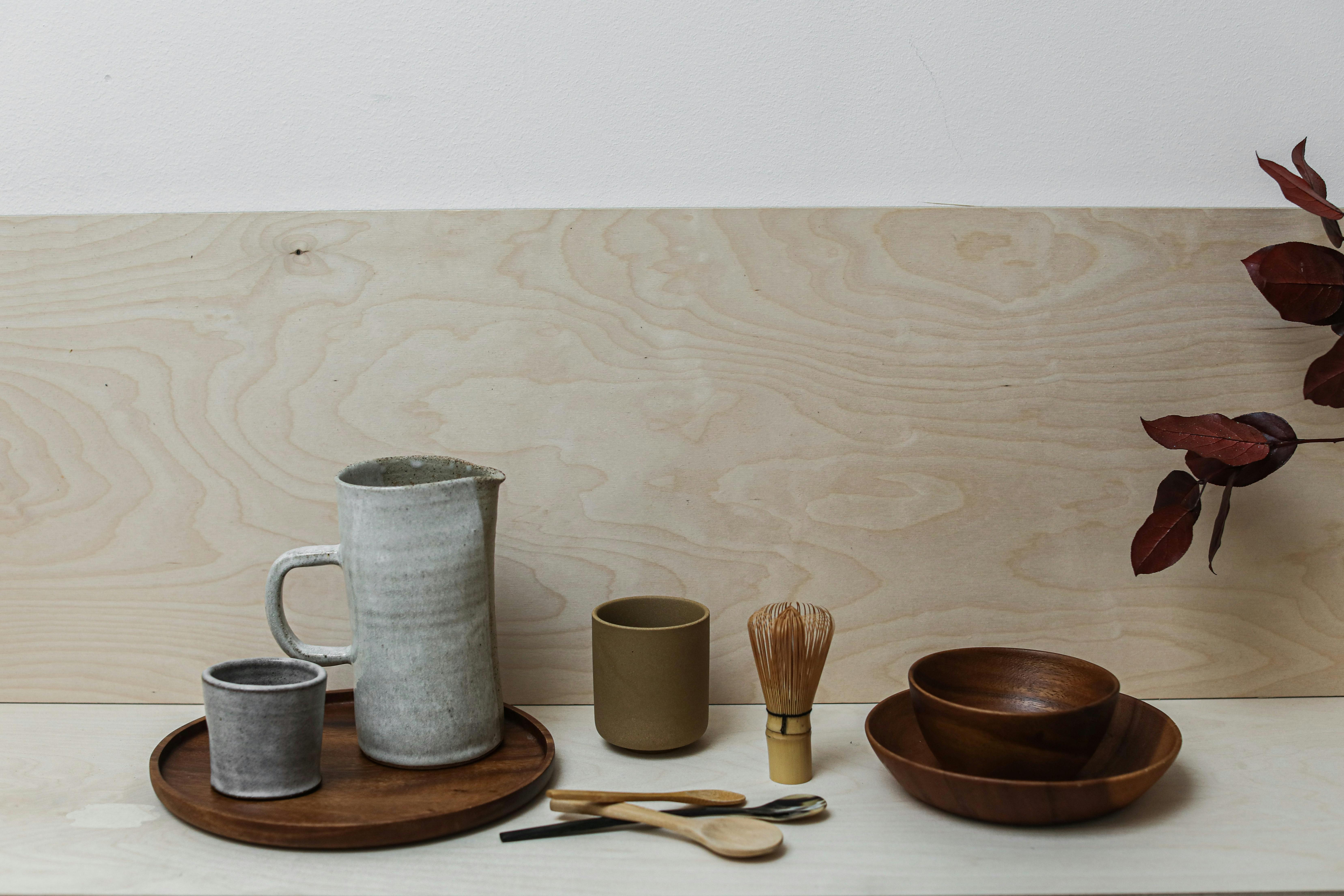Whimsical Wabi-Sabi: Embracing Imperfection in Home Design
In a world obsessed with perfection, a new trend is emerging that celebrates the beauty of flaws. Whimsical Wabi-Sabi, a fusion of Japanese aesthetics and playful design, is redefining how we approach our living spaces. This article delves into the art of curating homes that are both charming and imperfect, creating environments that are uniquely personal and refreshingly authentic.

The Roots of Wabi-Sabi
Wabi-Sabi is an ancient Japanese worldview centered on the acceptance of transience and imperfection. It emerged from Buddhist teachings and became prominent in Japanese aesthetics, particularly in the tea ceremony. The term Wabi connotes rustic simplicity, freshness, or quietness, while Sabi refers to the beauty or serenity that comes with age.
In traditional Japanese culture, Wabi-Sabi manifested in the appreciation of asymmetry, roughness, and simplicity. It celebrated the cracks in pottery, the patina on bronze, and the gnarled branches of a bonsai tree. This aesthetic stood in stark contrast to Western ideals of symmetry, grandeur, and flawlessness.
The Whimsical Twist
The modern interpretation of Wabi-Sabi in home design takes this concept a step further by infusing it with whimsy. Whimsical Wabi-Sabi retains the core principles of embracing imperfection and transience but adds an element of playfulness and creativity.
This approach encourages homeowners to curate spaces that feel lived-in and personal, rather than showroom-perfect. It’s about creating an environment that tells a story, evokes emotions, and reflects the unique personality of its inhabitants.
Key Elements of Whimsical Wabi-Sabi Design
Embracing imperfection doesn’t mean neglecting your space. Rather, it’s about curating items and arrangements that have character and soul. Here are some key elements of Whimsical Wabi-Sabi design:
- Natural Materials: Incorporate raw, unfinished materials like wood, stone, and clay. Look for pieces with visible grain, knots, or irregularities.
- Handcrafted Items: Favor handmade objects over mass-produced ones. This could include pottery, textiles, or furniture with slight imperfections that add charm.
- Weathered and Aged Pieces: Don’t shy away from items that show signs of wear. A scratched table or a faded rug can add depth and history to a space.
- Asymmetry and Irregularity: Avoid perfect symmetry in your arrangements. Mix and match different styles, shapes, and sizes to create visual interest.
- Muted Color Palette: Stick to earthy, natural tones as a base, but don’t be afraid to add pops of unexpected color for whimsy.
- Playful Elements: Incorporate surprising or humorous touches that bring joy and personality to the space.
Practical Application in Modern Homes
Implementing Whimsical Wabi-Sabi in your home doesn’t require a complete overhaul. Start small by introducing elements that resonate with this aesthetic:
- Display Collections: Showcase collections of imperfect items, like mismatched vintage teacups or a variety of oddly shaped vases.
- Embrace Wear and Tear: Instead of hiding scratches or chips, highlight them. For instance, repair broken ceramics with gold leaf, inspired by the Japanese art of Kintsugi.
- Incorporate Nature: Bring in elements from nature, like driftwood, stones, or dried flowers. These items naturally embody the Wabi-Sabi aesthetic.
- Mix Old and New: Combine vintage pieces with modern elements to create an eclectic, lived-in feel.
- Add Whimsical Touches: Include unexpected elements like a quirky lamp, a playful piece of art, or an unconventional color combination.
The Psychology of Imperfection
The rise of Whimsical Wabi-Sabi in home design reflects a broader shift in our cultural mindset. In an era of social media perfection and curated online personas, there’s a growing desire for authenticity and realness in our physical spaces.
Psychologists suggest that living in an environment that embraces imperfection can have positive effects on mental well-being. It can reduce stress associated with maintaining a perfect home and foster a more relaxed, accepting attitude towards life’s imperfections.
Moreover, surrounding ourselves with objects that have history and character can create a sense of connection and continuity. Each scratch, dent, or irregularity tells a story, making our living spaces feel more personal and meaningful.
Sustainability and Wabi-Sabi
One of the most compelling aspects of Whimsical Wabi-Sabi is its inherent sustainability. By valuing imperfect, aged, or secondhand items, this design philosophy encourages a move away from disposable consumer culture.
Instead of constantly replacing items to keep up with trends, Wabi-Sabi promotes the idea of cherishing what we have, repairing what’s broken, and finding beauty in the old and worn. This approach not only reduces waste but also fosters a more mindful relationship with our possessions.
Challenges and Considerations
While Whimsical Wabi-Sabi offers a refreshing approach to home design, it’s not without its challenges. One of the main difficulties lies in striking the right balance between curated imperfection and clutter. It’s easy for a Wabi-Sabi inspired space to look messy or neglected if not thoughtfully arranged.
Additionally, in a culture that often equates newness with value, it may take time to shift perspectives and truly appreciate the beauty in imperfection. Education and exposure to this aesthetic can help overcome these barriers.
The Future of Whimsical Wabi-Sabi
As we move towards more conscious and personalized approaches to home design, Whimsical Wabi-Sabi is likely to gain further traction. Its emphasis on authenticity, sustainability, and individuality aligns well with emerging values in interior design and lifestyle choices.
We may see this philosophy influencing not just home interiors, but also architecture, product design, and even fashion. The idea of embracing imperfection could lead to more diverse, inclusive, and creative expressions in various fields of design.
In conclusion, Whimsical Wabi-Sabi offers a refreshing alternative to the pursuit of perfection in our living spaces. By celebrating the beauty of flaws, incorporating elements of play, and valuing the stories behind our possessions, we can create homes that are not just visually interesting, but also deeply personal and meaningful. In a world that often feels too polished and impersonal, this approach to design reminds us to find joy in the imperfect, the quirky, and the real.





